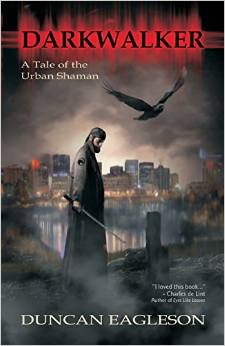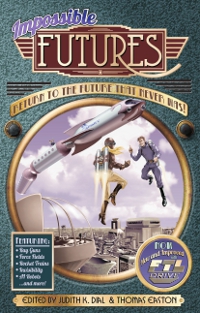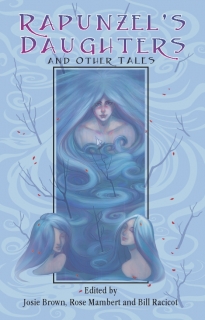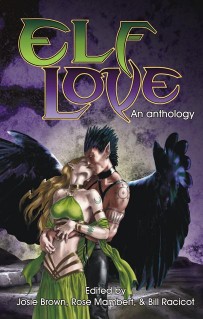Once upon a time, small presses were few and far between, and of those, more than a few were actually fairly prestigious, issuing limited editions, often lavishly produced and sometimes illustrated, many of them by well known authors and illustrated by well known artists, both contemporary and historical. As the digital revolution began to take hold, the means of production became more accessible, and printing costs lowered, small presses began to proliferate, and since sheer access to means never guarantees the knowledge and skill to produce something worthwhile, the connotations of the term “small press” began to shift. Once e-books appeared and began to encroach on the traditional book market, once anyone with a word processing application installed on their computer could become a “publisher,” it seemed like the transformation of the term was complete: the “small press” was now nearly as suspect and shady as “self-publishing” or worse, “vanity press.”
To make such a claim, however – that any such process is ever “complete” – is to court disaster (or at least embarrassment).
(Mind you, this is a completely subjective report based on my own observations. Your Mileage May Vary, and your memories of historical trends and attitudes may be different from mine.)
It looks to me like “small press” is quickly becoming a respectable term again. I admit it, I was one of those who, at one point, wouldn’t give a small press book even a cursory look. Which was probably silly even then, since a number of small presses that existed Back in the Day had certainly survived through the proliferation of the “small press” ebooks and PODs that made the term odious. In any case, as was probably inevitable, the amateur fly-by-nights, aspirants to get-rich-quick-through-publishing, and self indulging vanity self publishers began to sink, while the small press folks who had a clue about things like editing, graphic design, and decent cover art began to swim, and rise to the top. Today, you can walk into Barnes and Noble and see small press books on their shelves that are indistinguishable from the what the Big New York Publishers are putting out.
The first time I sold a story to a small press, I found myself saying things like “Well, it’s just a small press, but the stories in this anthology are really good.”
Recently, I’ve been teaching myself to drop the “justs” and the “buts.”
Small press and self-publishing are no longer fringe, they’ve moved into the mainstream. Just as Sturgeon’s law applies to regular Big Publishing product, it applies to the small and self publishers. There’s plenty of crapola in both camps.
I admit, despite these intellectual realizations, my subconscious isn’t there yet. My first novel is out from a small press, and while part of me is elated about that, there’s also a part of my brain that won’t feel as if I’ve “arrived” until I’ve got a book in B&N published by one of the Big Guys. Don’t judge, okay? I know it’s irrational. I grew up in an earlier time, and still love my hard copy books, too.
Oh, I get the whole e-book thing, I’ve got my own Nook, and a huge library in it. I love it. But I’m also conditioned to the visceral pleasure of the feel of the pages, be they slick, thick, and expensive, or rough cheap newsprint, to the weight and feel of a printed book, the smell of the ink. I grew up with paperback covers that, unless they were TV or movie tie-ins, were almost exclusively paintings – by Frazetta, Bama, Jones, Berkey, Kassum, and their ilk. In my local library I pored over hardback editions of classics with elaborate painted illustrations by Wyeth and Pyle and Leyendecker. As an adult, when I began working in the publishing industry as a cover artist, there were still mid-list writers who could make a decent living at writing. That’s still true for some, but the number seems to be dwindling. I like to tell myself that if I’d started writing seriously thirty years ago, instead of just in the last decade, I might be among their number today. But as Stoker once had Van Helsing say, “The milk that is spilled cries not out afterwards.”
In my youth, I thought a book was a physical thing. Now, it seems a conceptual thing – sometimes existing in a physical form, but always extending beyond the boundaries of that form into (for lack of a better term) the info-sphere. Of course, that was also always true, whether I realized it or not. Books have always existed in the minds of their writers and readers, as things which were only represented by that physical paper and board object. I find it interesting that e-books have brought this reality to our conscious attention.
So while there is still that piece of my mind that feels I won’t have “arrived” as an author until I’m published by The Big Guyz (that component currently sulking in its corner as other parts of me deny its version of Reality), I look at the many people who have praised my work, and the fact that one of my Very Favoritest Authors said he loved my first book, and think “arrived” is a moving target, and a matter of opinion.”
I look at the company I’m in, the other people Pink Narcissus publishes – authors like Ash Krafton, Stuart Sharp, Lyle Blake Smithers, Nancy Hightower, Rose Mambert – and I admire their work, I’m proud to be in their company. Most of them aren’t household names, not yet, anyway. Some may become so, hitting the bestseller list, others may remain “writer’s writers,” admired by their peers but not by the mainstream audience. But I look at the other talents that PN has chosen to work with and think, “How can I not have arrived? Look at the company I’m in.”
Yes, I’m a bit of a dinosaur. But even dinosaurs can learn, if they choose to pay attention. I won’t be using the words “just” or “but” any more when I speak of my book and my publisher. My first novel is out from Pink Narcissus Press, period. That’s plenty to be proud of.




 "Duncan Eagleson's Viking Snow White retelling, "Snovhit" [has] an authentically ancient feel."
"Duncan Eagleson's Viking Snow White retelling, "Snovhit" [has] an authentically ancient feel."